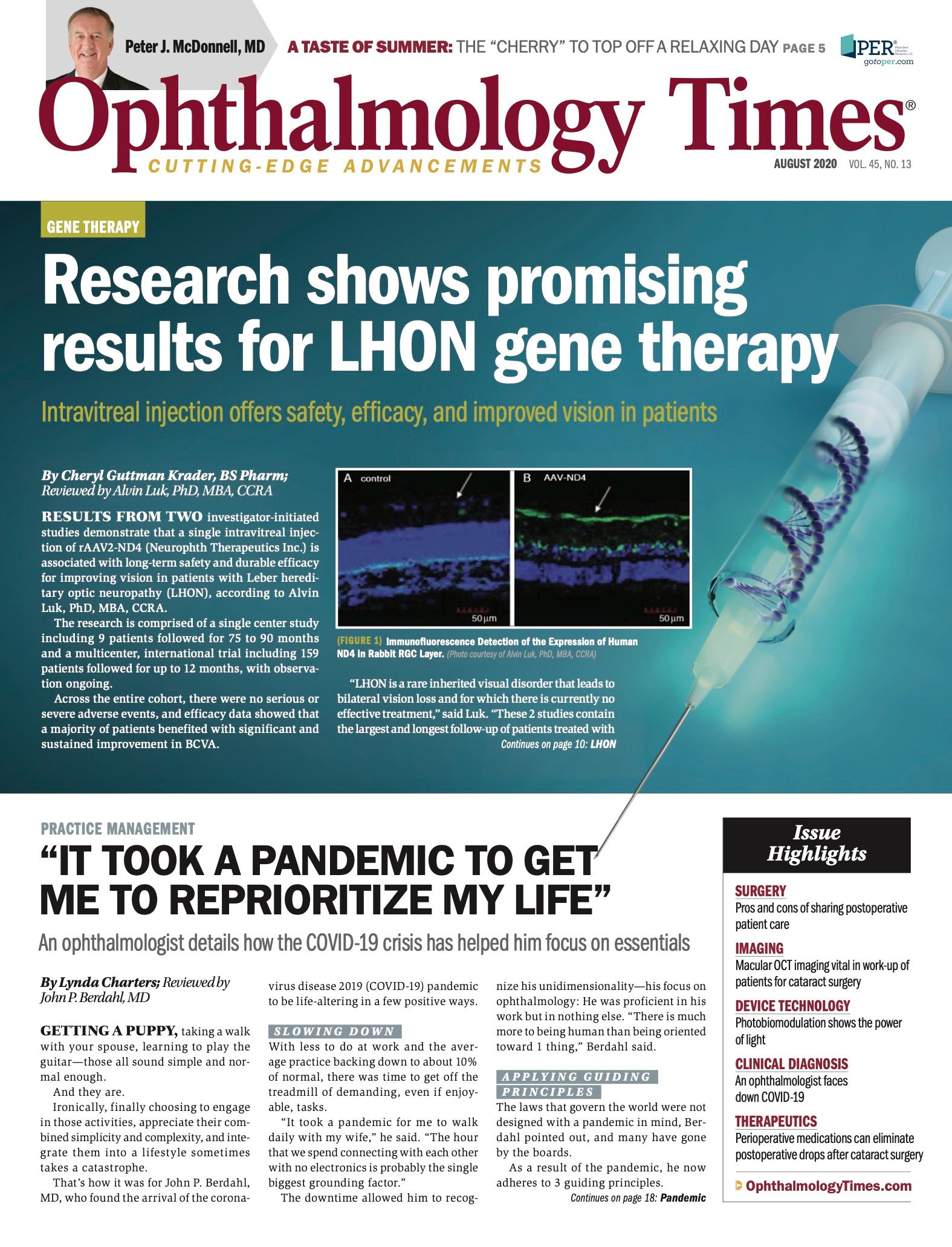Publication
Article
Digital Edition
COVID-19: ASRS survey details impact on retinal patients, practices
Author(s):
Pandemic is disrupting clinical facilities, putting individuals’ ocular health at risk

This article was reviewed by David F. Williams, MD, MBA
The American Society of Retina Specialists’ COVID-19 Survey Series put in boldface type what most retina specialists already surmised: The pandemic was wreaking havoc on clinical practices and perhaps patients’ ocular well-being.
This scenario developed fast, efficiently, and with little warning.
As David F. Williams, MD, MBA, pointed out, on December 31, 2019, Chinese health authorities reported a cluster of 41 patients with a mysterious pneumonia in Wuhan, and by March 11, an international pandemic affecting 6 continents had been declared.
“Retina practices throughout the nation began to implement strategies to protect patients, staff, and doctors through enhanced sanitation, office decongestion, and social distancing,” said Williams, a past president of ASRS and in private practice in Minneapolis.
Related: How one surgeon is integrating recent retina advances in COVID-19 (ASRS 2020)
Patient/disease volume trends
The decreasing patient volume resulting from the societal shutdown was tracked by Vestrum Health in a continuously updated database of HIPAA-compliant data collected from the electronic health records of several hundred retina specialists across the US.
The results of this tracking were reported in Retina Times.1
An abrupt decline in total patient volume of about 38% was detected during week 3 of March, referred to as the COVID-19 period.
“Patient volumes continued to drop in the subsequent 4 weeks,” Williams said, “to a nadir of approximately 50% of the pre-COVID levels, with slow recovery by May 16 to a volume approximately 20% lower than the pre-COVID-19 time.”
Data analyses dove deeper and identified differences between the rates of returning patients and newly referred patients.
Related: Ocular trauma in the COVID-19 era
The former dropped to about 50% of the pre-COVID-19 level and later recovered to 80% of the pre-COVID-19 level by the end of May, but the latter decreased by as much as 70% and remained lower longer with a return to only 50% of the pre-COVID level by mid-May.
The good news is that patients receiving regular anti-vascular endothelial growth factor (VEGF) treatments for age-related macular degeneration (AMD) over the course of months tended to continue treatment during the pandemic compared with patients with other retinal diseases.
However, the data regarding new patient referrals was disconcerting, in that there was a 67% decrease in referrals of new patients with dry AMD between March and May 2020, a delay that may not bode well for these patients for whom visual preservation is the goal.
Another finding was the suggestion that the “presenting visual acuity in newly referred patients with diabetic macular edema during the COVID-19 period has been worse than in pre-COVID-19 times; this has implications regarding the physiological stress the pandemic may have on people with pre-existing disease and in particular for patients with delayed diagnosis and treatment,” Williams said.
Related: The eyes offer conjunctival clue to COVID-19
Comprehensive ophthalmology and optometry practices came to a grinding halt during the shutdown period and opened only for emergencies, slowing referrals.
The data also suggested that the very elderly, perhaps frail, population over 80 years of age may be at greater risk as a result of missing their vision-sustaining care by sheltering at home during the pandemic.
Patient volume also decreased more in the northeast US likely because of the severity of the pandemic.
--
David F. Williams, MD, MBA
e:dfws2@mac.com
Williams is a co-founder of and stockholder in Vestrum Health, LLC.
----
Reference
1. Halperin L, Garfinkel RA. Tracking the impact of COVID-19 on the retina community. Retina Times. 2020;38-52-55.

Newsletter
Don’t miss out—get Ophthalmology Times updates on the latest clinical advancements and expert interviews, straight to your inbox.





